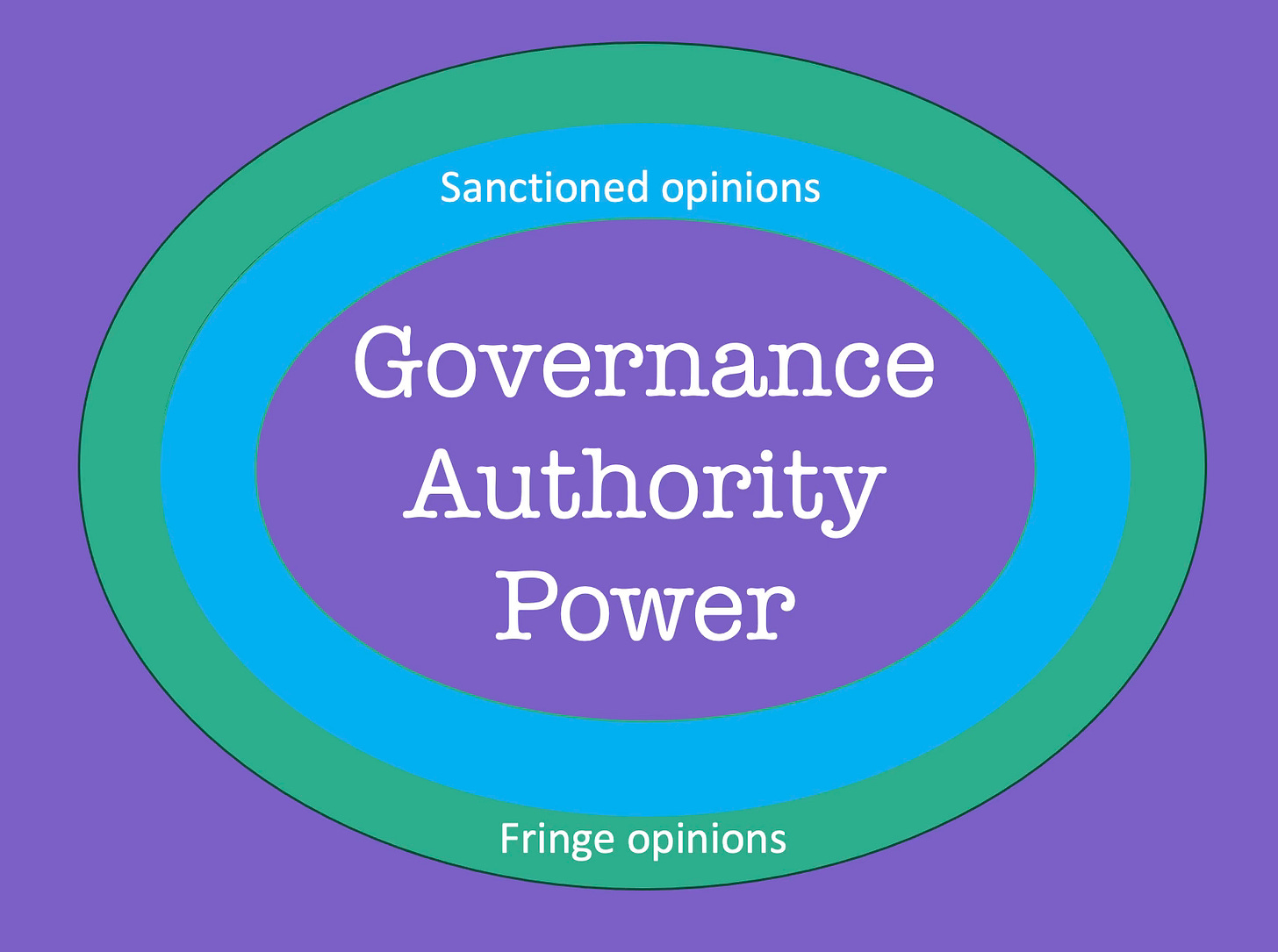Not a Pipe Dream
You may think that our industrial civilization has doomed the living planet, that ecological justice is now an impossible dream. Well, let’s cheer up for a moment. Consider these thoughts on how the dream might become a reality.
Half Earth
In his 2016 landmark book, eminent biologist E.O. Wilson expressed what many of us have long thought, that nature can’t be “saved” unless humans back off from a substantial portion of Earth. Wilson calculated that humans need to set aside about 50% of land and sea to conserve 80-85% of the world’s species (other ecologists previously drew similar conclusions, among them the ecosystem guru Eugene Odum over a half century ago).
As noted by Wilson, only about 15% of the land and 8% of the sea “has been put into reserves explicitly to try and protect the animal and plant species that are there, the biodiversity that is there.” Assuming those percentages hold up despite increasing economic and population pressures, we’d be lucky to save half the world’s species.
Wilson made it clear that his proposal “doesn’t mean that half the Earth would go over to something like the U.S. national parks, where people aren’t expected to live and carry on trade or anything else. It would include areas with human occupation. For example, it could include some areas where people are already preserving most of the wildlife by using very careful agriculture or running a fishing industry that is balanced and doesn’t wipe out species…It’s not as difficult to achieve as you might immediately think…It means creating something equivalent to the U.N.’s World Heritage sites…We’re talking about areas that are treated as very special because of their fauna and flora, and where priority is given by the people living there to maintain a full complement of native animals and plants.”
It is worth saying that, to preserve the Earth’s living diversity, Half Earth areas must be of sufficient size to support healthy populations of indigenous species, include all the world’s biomes and ecoregions, and be ecologically connected to one another to allow gene flow, natural evolution, and adaptation to climate change.

Piecemeal efforts won’t suffice
Conservationists have gone to great lengths to protect wildlife and their habitats throughout the world. Nonetheless, most life continues to plummet. As Wilson noted:
But we knew even then, in 2016, that only about one-fifth of the species on the International Union for Conservation of Nature “Red List”—that is, species in some immediate danger of going extinct—had had the slide toward extinction slowed by all these efforts around the world. I think most of us realized that we were achieving many victories in a losing war. And now seemed appropriate, to me at least, that we go for a moonshot and try to see if we could do it all at once…Half-Earth argues that the situation facing us is too large to be solved piecemeal and proposes a solution commensurate with the magnitude of the problem.
So why Half Earth? We look at the world and see vast natural landscapes transformed for agriculture, urbanization, commerce, and industry. We see a living planet overwhelmed by livestock, mining, highways and road networks, and out-of-control plastic and chemical pollution, invasive species, poaching, overfishing, ocean acidification, ship strikes, off-shore “development,” and anthropogenic climate change. In conclusion, the threats posed by humans to other life are so dizzyingly varied, intense, and complex that they can’t be abated without geographically limiting human activity.
The Half-Earth vision combined with on-the-ground conservation efforts must become the new conservation imperative. To be clear, many dedicated people are already, in effect, working toward Half Earth through local ecological restoration, rewilding, and conservation research. Their efforts are often showcased by organizations such as the Rewidling Institute and the Natural Areas Association.
Who’s driving the Half-Earth Movement?
Most significantly, Indigenous peoples (although to my knowledge not specifically under the Half-Earth banner). Their cultures are generally far more favorable to nature than the global predominant one, and they’re mobilizing more than ever to protect the environment. Although Indigenous people comprise less than 5% of the global population, they dwell on a whopping 25% of the land. Growing international and, in many cases, national support for Indigenous rights can help them fend off land speculators, corporate giants, corrupt government officials, and poachers from expropriating or exploiting their lands.
While to my knowledge no government has officially endorsed Half Earth, there’s still some encouraging news. Under the High Ambition Coalition for Nature and People, 119 countries (61% of total) have endorsed a “global goal of effectively conserving and managing at least 30 percent of the world’s land and ocean by 2030…while ensuring that any sustainable use, where appropriate in such areas, is fully consistent with conservation outcomes, recognizing and respecting the rights of indigenous peoples and local communities, including over their traditional territories.”
Likewise, the UN’s Global Biodiversity Framework has embraced this “30x30” target. Most recently, the European Union approved a first-ever law “to restore at least 20 percent of the EU’s land and sea areas by 2030, and all degraded ecosystems by 2050.”
In the U.S., President Biden signed an executive order in 2021 that committed to protect 30% of U.S. land and water by 2030. (However, critics point out that the order allows farming, grazing and logging if land is managed for “the long-term health and sustainability of natural systems,” whatever that means).
These varied accomplishments can be seen as stepping stones to Half Earth. There’s at least one political leader trying to go further. U.S. Congressman Don Beyer of Virginia introduced a resolution in the U.S. House of Representatives, expressing the need “to support protecting and conserving at least 50 percent of the land, freshwater, and ocean ecosystems in the United States and encourage diplomatic community efforts to achieve this goal worldwide, including early and often stakeholder consultation to ensure just impacts and transition.” (However, the resolution remains stalled in committee.)
Finally, there are nongovernmental organizations and a good deal of literature promoting Half Earth. Key examples include:
The E.O. Wilson Biodiversity Foundation.
Nature Needs Half, an international coalition that includes nonprofit organizations and public officials.
A Global Deal for Nature and related papers, a Global Safety Net and A Global Deal For Nature, headed by scientists.
The International Union for Conservation of Nature (IUCN).
Books: Rescuing the Planet: Protecting half the land to heal the earth by Tony Hiss (2021) and Half-Earth Socialism by Drew Pendergrass and Troy Vetoes (2022)
What needs to happen
Grow the movement! Greatly expand public interest, support, and participation in Half-Earth efforts, and firmly establish its agenda among environmental organizations. Let’s go animal lovers and advocates, there are countless of you out there who can help! Globally, we’ll need large investments by governments and foundations on a scale at least as large as that for climate change, to drive overall Half-Earth planning, on-the-ground conservation work, and protection of Indigenous lands.
Don’t let them water it down! Protect Half-Earth goals against lesser targets. Above all, don’t let it suffer the same tragic fate of “sustainable development” by welding it to economic growth.
I find it troubling that some well-meaning organizations aim merely to “protect what is left [of nature] and improve the rest.” Equally disappointing are wishy-washy suggestions like one made by a leader of a large funding organization that, “The hope [for the 30x30 goal] is that each nation will set the most ambitious goal that it can.” How flaky!
Trigger a new paradigm! Shift today’s environmental mindset from human-centered to life-centered. Make it about “Our Planet’s Fight for Life” (the subtitle of Wilson’s book) and not about “our right to the planet.”
I’d be remiss if I failed to note that achieving Half Earth would still subject 15-20% of wild species to extinction, according to Wilson’s calculations. In my view, allowing that would be tantamount to genocide. For many of us, saving nature means much more than conserving biodiversity in its generic sense. Start with Half Earth and it will become possible to save all!
Promote sufficiency living and farming on less land. And yes, germane technology too. As E.O. Wilson noted: “High tech is producing new products and ways of living that are congenial to setting aside more space for the rest of life.” In other words, “Less is more,” which brings us to the matter of Degrowth.

Degrowth
Indispensable for Half Earth
The threats posed by our civilization to other life are of such magnitude that they simply cannot be defused without physically scaling down the human enterprise. Tremendous consumption of natural resources by affluent countries and a massive global population fuel ongoing destruction of nature.
If it’s impossible to achieve justice for the living world without preserving at least half of Earth’s land, water, and sea, it’s equally impossible to achieve that scope of restoration without degrowth.
What’s up with the Degrowth movement?
The movement originated with a handful of analysts in the mid to late 1900s, most notably with the Romanian economist Nicholas Georgescu-Roegen, now regarded as the founder of ecological economics.
Since then, Degrowth has become popularized by movement leaders such as Tim Jackson (Prosperity Without Growth: Economics for a Finite Planet, 2009, and Post Growth: Life After Capitalism, 2021), Jason Hickel (Less Is More: How Degrowth Will Save the World, 2020) and most recently Kohei Saito (Slow Down: The Degrowth Manifesto, 2024).
By many measures, the Degrowth movement is spreading from the periphery of society into the arena of broader public and political debate. Matt Orsagh, advocating for Degrowth here on Substack, is encouraged that mainstream media and the business community may finally be warming up to the idea. Matt cites a New York Times article that presented the case for degrowth to potentially 7.8 million subscribers who likely had never heard of it before. He points to another one (In Defense of Degrowth) appearing in the Harvard Business Review. Ernst & Young, one of the big four global accounting and consulting firms, has published an article acknowledging “that a growth mentality that leads to overconsumption is a problem that needs to be addressed…They introduced the concepts of degrowth, donut economics, planetary boundaries, and many other degrowth greatest hits to their huge international client base.” Even the normally pro-growth World Economic Forum may be having second thoughts about the wisdom of forever growth.
While no government has yet endorsed Degrowth, Scotland, Iceland, New Zealand, Wales and Finland have committed to “well-being” economics that prioritizes public and planetary health over economic growth. Going a step further, the Intergovernmental Panel on Climate Change (IPCC) and the Intergovernmental Science-Policy Platform on Biodiversity and Ecosystem Services (IPBES) have warmed to the idea that degrowth should be considered in protecting the environment. They stopped short of approval but it’s encouraging news nevertheless given how tough it’s been to suggest economic degrowth within the workings of the corporate state.
While not mainstream, but still significant, are annual international Degrowth conferences. Participants share the “common goal of reducing production and consumption, significantly shrinking the ecological footprint, and prioritizing democratic planning with social justice and concern for human and environmental well-being.”
For more on Degrowth literature, I’ll refer you to the Degrowth Database, “a cozy corner of the internet where you can find a bunch of resources all about living more sustainably and valuing well-being over economic growth.” Also, check out the Degrowth library, with nearly 3,600 items.
What needs to happen
Admit it, we’re overpopulated! It’s hard to imagine global economic degrowth without reducing our numbers. Going from the current 8 billion people in the world today to a projected 10 billion before the end of this century would represent a 25% increase. This would severely undermine any Degrowth economy that might emerge. From what I can tell, the Degrowth movement is at best timid on the matter of population overshoot.
Incidentally, we use the term “Scale Down” on this platform to embrace Degrowth while at the same time recognizing that achieving a wholesome balance between humans and the rest of living world requires a purposeful, significant, and timely reduction in our numbers.
Don’t let Degrowth become the new “green growth.” The establishment will surely attempt to flip the meaning of “degrowth” from “less is more” to “more for less” by making it solely about efficiency improvements and technological solutions that, in effect, promote growth rather than reduce material consumption.
Become the Establishment! Capture the politics! Move Degrowth from the political fringes toward the center of governance. But how…?

Degrowth as a double-layered cake.
Layer one — You and me. As individuals we can scale down consumption, purchase products we need that are efficient and last, and choose to have few children or better still be child-free. We can speak out in favor of degrowth, and on the importance of understanding Earth as a wonderful planet not just for humans for the entirety of life.
Some of us will pause here. There are a lot of pressing challenges in life. Our varying financial, emotional, physical, and social abilities and skills make this understandable. Even if we can’t go further, we can rejoice in becoming model citizens of Earth!
Layer two — The bigger political world. There’s community leadership, town and county governance, and state, national, and international institutions to serve in and engage. Those of us who can handle the politics definitely should.
In closing, let’s revisit E.O. Wilson’s final quote about Half Earth in the fourth paragraph of this post: We’re talking about areas that are treated as very special because of their fauna and flora, and where priority is given by the people living there to maintain a full complement of native animals and plants.
Well, that should be true for everywhere we live, eh?
SCALE DOWN is a reader-supported publication. To receive new posts via email and support my work, please become a free or paid subscriber. It will help lift my spirit when I’m down in the dumps. Thank you! — Tony P.



